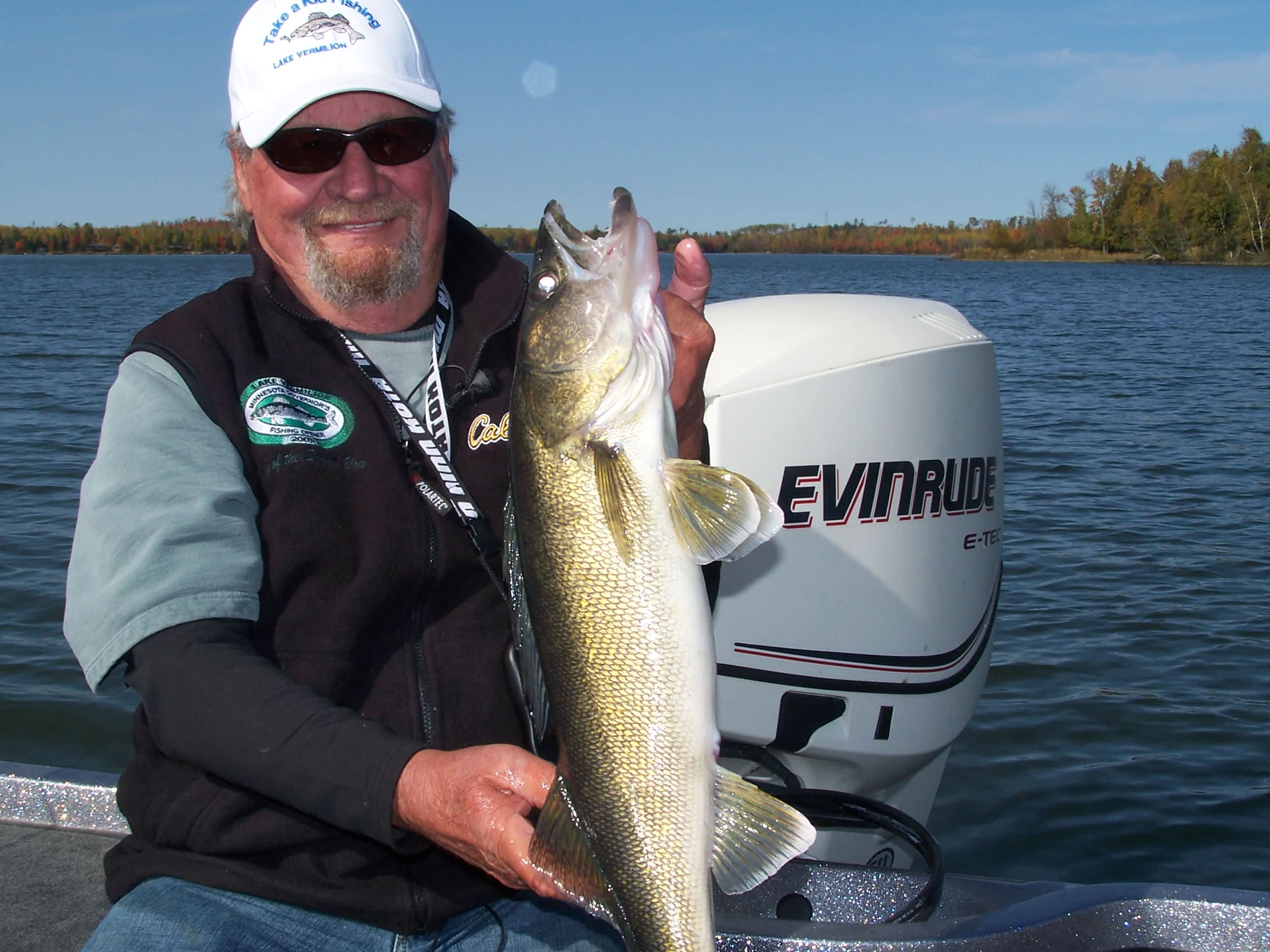Use Live Bait for Fall Fishing Success
OutdoorHub Contributors 10.01.12

Fall arrives at different times in different places across North America. Right now in the Midwest, we’re experiencing beautiful weather, but the fish are noticing a change in the seasons. Water temps are dropping, and the days are getting shorter. The fish know that winter is on the way, and this tells them it’s time to fatten up for winter. At this time of year, for a wide variety of fish wherever you might be fishing, live bait is going to be a great way to catch’em. Other presentations will work, but in the fall, you just can’t beat live bait in many situations. Last week I was on Lake Vermilion in northern Minnesota. In the following I’ll share our tips for success for walleyes and smallmouth bass on Vermilion and how you can use these techniques to catch more fall fish wherever you fish. Here we go!
Lake Vermilion is the southern most Canadian Shield Lake: It has lots of rock outcroppings and sunken rock islands. There are lots of evergreen trees along the shoreline, and a few maple and birch trees. Last week the trees were alive with color. It was a beautiful setting made even more enjoyable by the number of fish we caught. They were eating big-time, getting ready for the upcoming cold season. We tried a variety of presentations, and caught fish with pretty much every presentation. The best though, was a minnow on either a Fire-Ball jig or a Roach Rig. Minnows out-produced everything five to one. That’s too big of an advantage to ignore.
My fishing partners had been on the water the day before and knew we were going to need lots of minnows. Even in the colder waters of fall, bait care is critical. You need good lively bait. We were careful not to crowd the minnows, and we kept them in aerated Frabill Aqua-Life and Min-O-Life containers. These units do an outstanding job of keeping your live bait lively.
Redtails are the best minnows in the fall, but they’re expensive. We used fatheads and rainbows on the jigs and suckers on the rigs. They all produced. Fire-Ball jigs were made for live-bait. When using minnows, put the hook in the minnows mouth and out the back of its head. The minnow will stay on your hook better this way, and short-strikes will be reduced.
We mostly fished the transition area where the rocks changed to sand. When fishing lakes that have smallmouth and walleyes, the smallmouth will push the walleyes around. If you’re catching walleyes, then start catching smallmouth, go either deeper or shallower if you want to continue to catch walleyes.
The smallmouth liked the larger suckers better than the smaller fatheads and rainbows, and the walleyes were just the opposite. Minnows in the three to five inch range were best for the walleyes, and suckers up to about seven inches were more appealing to the smallmouth.
If you miss a couple of fish, on the next bite keep a little pressure on the fish. This is when a lighter action rod really becomes an advantage. A little pressure doesn’t spook the fish, but too much will.
When fall arrives in your area, get a bucket full of bait and get on the water. You’ll experience some wonderful scenery, and if you do things right, you’ll also experience some wonderful fishing. That’s a win/win deal that you need to take advantage of.
To see all the newest episodes of Fishing the Midwest television, visit fishingthemidwest.com or Join us at Facebook.com/fishingthemidwest

